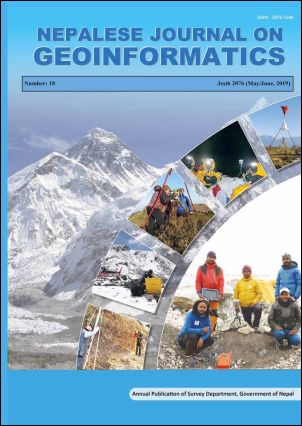Image Fusion Technique: Algorithm to Application
DOI:
https://doi.org/10.3126/njg.v18i1.51112Keywords:
Image Fusion, Resolution,, AOI (Area of Interest), Supervised Classification, Accuracy AssessmentAbstract
This paper highlights the image fusion technique with two images ( one before flooding and another after flooding), thereby classifying the major land use categories in the flooding area. In July 2003, strong flooding occurred in Huai River, Anhui Province - China which caused serious harm to people's life and property. In order to reduce the loss, the detection of the flood inundated area and their land use categories need to be identified. Using multi-temporal images, during image fusion; the lacking information in one image is completed by another image. It substitutes missing information in one image with signals from another sensor image. The IHS sharpening technique is one of the most commonly used techniques for image sharpening. Different transformations have been developed to transfer a colour image from the RGB space to the IHS space. SAR image and TM multispectral image having different resolutions are fused giving higher resolution. The fused image is classified using unsupervised image classification technique with desired no of classes. The resulting classified image further divided into two categories only, namely disaster and non disaster area. Still, main task relies on how to categorize the disaster area into different land use classes and about their accuracies. The original image before flooding is classified using maximum likelihood classifier with desired number of classes. The maximum likelihood classifier performs its best due to the assumption of normal probability distribution of pixels, calculating probability density function for each pixel for each class and assigning them to the class where its occurrence is highest. So, when overall classification accuracy and KHAT statistic is good enough, final classification is made. The previously classified image with two categories and newly supervised classification are overlaid with proper transparency setting to get different land use categories.




